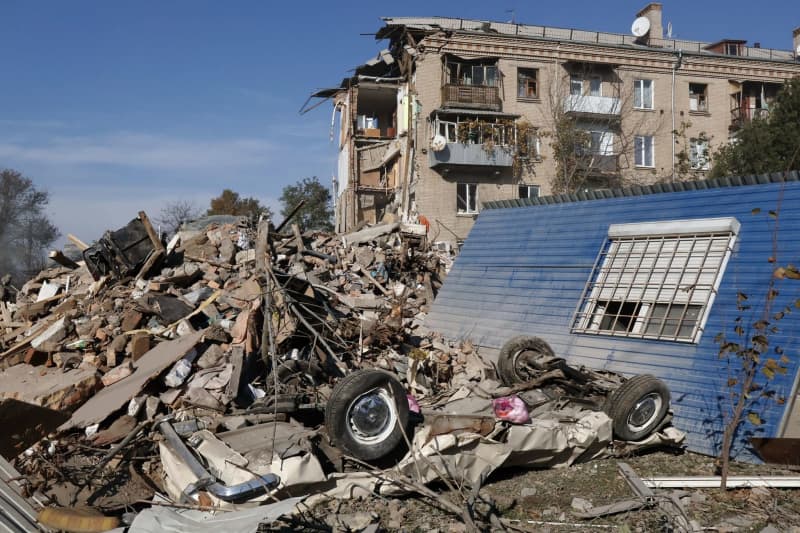Recent developments on the eastern front of the Ukraine conflict reveal an intensifying military campaign by Russian forces aimed at breaching Ukrainian defense lines, particularly around the strategic town of Kurakhove. The Ukrainian general staff reported a total of 108 Russian attacks in eastern Ukraine, with a notable 39 concentrated in the Kurakhove sector alone. These assaults were heavily supported by artillery fire, and although the Ukrainian forces managed to repel the attacks, the situation highlights the ongoing and aggressive posture of Russian military strategy in the region. This pattern of escalated conflict illustrates Russia’s continued determination to achieve territorial gains in eastern Ukraine despite the fierce resistance encountered from Ukrainian forces.
In addition to Kurakhove, heavy fighting has also been documented in the nearby Pokrovsk region, underscoring the widespread nature of the Russian offensive. According to Ukrainian sources, Russian forces engaged in numerous attacks, including the use of warplanes that deployed guided glide bombs against Ukrainian positions. The reported daily resistance encounters in Pokrovsk—fifteen Russian attacks, specifically—reflect the high-stakes environment on the ground as both sides grapple for control over strategically vital territories. The persistence of Russian military activity directly contributes to rising tensions and violent encounters in the area, signalling a shift towards a more concentrated offensive by Russian troops.
The strategic significance of Kurakhove and Pokrovsk cannot be overstated, as any successful breakthrough in these locales could enable Russian forces to move deeper into Ukrainian territory. Securing these towns would potentially allow Russian units to unravel Ukrainian defensive positions, posing a direct threat to broader regions of eastern Ukraine. This ambition reflects long-standing Russian objectives to strengthen its military grip in the Donbas region, an area marked by longstanding conflict and geopolitical intrigue. As this conflict escalates, the implications for the local population and overall stability in Ukraine raise serious concerns about humanitarian conditions and the potential for increased civilian casualties.
The reports coming from these frontline areas also highlight not only the military tactics employed by Russian forces but also the ongoing humanitarian crises resulting from such confrontations. As strikes on residential buildings and civilian infrastructure continue, the international community is reminded of the toll that warfare can exact on non-combatants. Rescue efforts in affected areas have become a critical part of the response, with agencies working tirelessly to mitigate the devastation wrought by indiscriminate artillery shelling and air raids. The plight of the local population amidst such intense military engagement brings to light the urgent need for humanitarian assistance and protection protocols in conflict zones.
As military operations unfold, the responses from both Ukrainian defenders and the international community remain pivotal. The steadfastness of Ukrainian forces in repelling the assaults may bolster morale but also calls into question the sustainability of their defenses amid constant pressure. On an international scale, diplomatic efforts to address the conflict must contend with the realities on the ground, including the necessity for arms support, strategic alliances, and the complexity of negotiations aimed at achieving lasting peace. The situation illustrates a broader geopolitical struggle, where local dynamics intersect with international interests and security considerations.
In conclusion, the current offensive in and around Kurakhove serves as a critical flashpoint in the ongoing conflict between Russia and Ukraine. The robust scale of Russian military operations and the tactical focus on disrupting Ukrainian defenses reflect the high stakes involved in the Donbass region. As both sides brace for further engagements, the evolving nature of warfare and its humanitarian ramifications spotlight the urgent need for a comprehensive and sustainable resolution to the protracted conflict. The experiences of those living in these contested areas must remain at the forefront of any discussions aimed at peace, highlighting the profound impact of military aggression on civilian lives and the intricate pathways toward reconciliation in a war-torn land.

